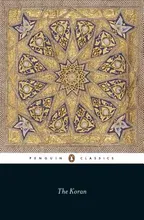El corazón del daño, este dispositivo literario abierto y complejo,
recupera el diccionario doméstico de injurias y amenazas, donde las
palabras proyectan desde la lejana casa familiar su poder de presagio y
convierten el sueño en pesadilla.
La obra de María Negroni huye de cualquier taxonomía. Su referencia más
clara podría ser Anne Carson. Como ella, Negroni despliega una narrativa
extremadamente lírica, a la vez seca, precisa y voluptuosa.
En El corazón del daño, combina la biografía, la nota íntima, la
observación afilada y sagaz, la crónica política, el léxico familiar y
la canción de la desesperada. Todos los recursos para contar una vida y
despedir a una madre también desesperante, también desesperada. Pero en
la recuperación que es todo duelo, hay una intención novedosa: la de
compartir esas experiencias y las asociaciones literarias. "Una mujer
difícil y hermosa ocupa el centro y la circunferencia de esa casa. Tiene
los ojos grandes, los labios pintados de rojo. Se llama Isabel."
Los recuerdos de esa madre que lo ocupa todo surgen nítidos, pero para
pensarlos y transmitirlos -darle la piel de las palabras- la memoria es
como un objeto que hay que girar. De cada cara del prisma, un rayo de
luz se descompone. ¿O es que son una esfera? La autora va a aplastar ese
material, maleable e inasible, para que quepa entre las tapas de este
libro.
ENGLISH DESCRIPTION
The Heart of Harm, this literary devise, open and complex, restores
the domestic dictionary of insults and threats, where words project
their power of foreshadowing from the distant family home and turn
dreams into nightmares.
María Negroni's work shuns away from all taxonomies. Her most obvious
reference might be Anne Carson.
In The Heart of Harm, Negroni blends biography, intimate entries,
sharp and keen observation, political chronicle, family lexicon, and the
song of the desperate. All the necessary resources to tell a life and
bid farewell to a mother both exasperating and desperate. But in her
recovery, which is nothing but grief, there's a new intention: sharing
these experiences and literary associations. "A difficult and beautiful
woman is at the heart and the circumference of that house. She has big
eyes, lips painted red. Her name is Isabel."
Memories of that mother that takes up everything surge crystal-clear,
but in order to think about them and convey them--to give her flesh from
words--memory becomes an object you must rotate. From each face of the
prism, a ray of light dissolves. Or is it that memory is actually a
sphere? The author is going to crush that malleable and elusive matter
to make it fit the covers of this book.













